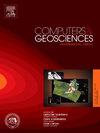SmartMagDL: Smartphone geomagnetic mapping using deep learning
IF 4.4
2区 地球科学
Q1 COMPUTER SCIENCE, INTERDISCIPLINARY APPLICATIONS
引用次数: 0
Abstract
Magnetic field mapping is an essential tool in geoscience, for identifying anomalies and understanding subsurface structures, requiring systematic and methodical data acquisition. The use of smartphones’ built-in magnetometers for this task offers advantages such as cost-effectiveness, accessibility, and simplicity. Recent works relied on model-based interpolation techniques significantly limited by sparse data collection, sensor noise, orientation-dependent distortions, and overall low data quality. As a result, magnetic maps were often noisy and unreliable for practical applications. In this work, we aim to fill this gap by introducing a deep learning (DL) approach to overcome these challenges and produce accurate, high-resolution magnetic field maps from smartphone data. To address the limitations of extensive real-world data collection, we developed an innovative two-stage simulation framework to generate the required training datasets. First, the theoretical magnetic field produced by ferromagnetic objects in a 30 m × 30 m area was computed to serve as ground truth data for the network. Second, a simulation model was implemented to replicate the data acquisition process of smartphone magnetometers. This model included real-world survey protocols, noise factors, sensor behavior, and simulated trajectories based on real world recorded data. Compared to the model-based baseline, our method improves anomaly localization, reduces noise, and enhances accuracy. At the 80th percentile the MSE and LPIPS metrics showed 75% and 55% improvements respectively, further validated by visual analysis of the reconstructed maps.

SmartMagDL:使用深度学习的智能手机地磁制图
磁场测绘是地球科学中识别异常和了解地下结构的重要工具,需要系统和有条不紊的数据采集。使用智能手机内置的磁力计完成这项任务具有成本效益、可访问性和简单性等优势。最近的工作依赖于基于模型的插值技术,这些技术明显受到稀疏数据收集、传感器噪声、方向相关失真和整体低数据质量的限制。因此,磁图在实际应用中往往存在噪声和不可靠性。在这项工作中,我们的目标是通过引入深度学习(DL)方法来填补这一空白,以克服这些挑战,并从智能手机数据中生成准确、高分辨率的磁场图。为了解决广泛的现实世界数据收集的局限性,我们开发了一个创新的两阶段模拟框架来生成所需的训练数据集。首先,计算30 m × 30 m区域内铁磁物体产生的理论磁场,作为网络的地真值数据;其次,建立了智能手机磁强计数据采集过程的仿真模型。该模型包括真实世界的调查协议、噪声因素、传感器行为以及基于真实世界记录数据的模拟轨迹。与基于模型的基线相比,该方法改进了异常定位,降低了噪声,提高了精度。在第80百分位,MSE和LPIPS指标分别显示75%和55%的改善,通过重建地图的视觉分析进一步验证。
本文章由计算机程序翻译,如有差异,请以英文原文为准。
求助全文
约1分钟内获得全文
求助全文
来源期刊

Computers & Geosciences
地学-地球科学综合
CiteScore
9.30
自引率
6.80%
发文量
164
审稿时长
3.4 months
期刊介绍:
Computers & Geosciences publishes high impact, original research at the interface between Computer Sciences and Geosciences. Publications should apply modern computer science paradigms, whether computational or informatics-based, to address problems in the geosciences.
 求助内容:
求助内容: 应助结果提醒方式:
应助结果提醒方式:


